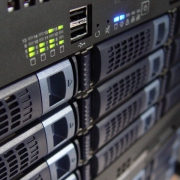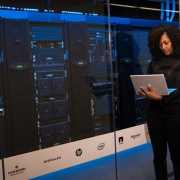If you want a shot at success, you’ll have to incorporate newer technologies into your business and back them up with enough IT support. Having adequate support helps ensure that everything is running as smoothly and efficiently as possible so that you can leverage the acquired technology to your advantage.
But how can you tell if you’re getting the right support for your IT needs?
The answer: What you need is an IT audit.
Today, you’ll learn everything there is to know about an IT audit, including what it is, how your business can benefit from it, and how it’s done.
What is an IT audit?
Information technology audit, or an IT audit, is a process wherein your IT infrastructure and its servers, systems, devices, apps, and components undergo a thorough assessment. Your hardware, software, and processes will be scrutinized for their capacity to secure your network, systems, and business data; and if they are adequately supported by tools.
To put simply, an IT audit is a general checkup of your IT infrastructure’s health so you’ll know which gaps to fill and how to address them.
Among the factors to evaluated during an IT audit are:
- Daily operations
- Quality management
- Data and cyber security
- Disaster recovery plan
- Level of IT support
After the assessment, you’ll get a complete overview of your existing IT assets. You will also receive insights on much-needed upgrades, policy updates, staff training, and other investments.
How can your business benefit from an IT audit?
An IT audit gives insight into different aspects of your IT infrastructure. In doing so, it offers the following benefits:
- Spot issues in your infrastructure that require immediate action so you can fix them right away
- Get standardized solutions for facilitating business efficiency and productivity
- Identify IT assets which are no longer necessary and are costing you money, and which assets need to be replaced with newer and better alternatives
- Plan your IT spendings by following the recommended guidelines on your audit report
However, the main benefit of an IT audit is that it improves the overall efficiency of your business. By helping you provide quality services to your customers, and allowing your business room to grow and innovate in a secure environment, it sets you up for the long-haul.
How is an IT audit performed?
Audits are performed by professionals who may be part of an in-house team or an outsourced IT support company. They follow a series of steps to assess an IT infrastructure.
It starts with a preliminary audit of existing IT assets – including the number of devices which are actively used and what they are used for. Next, your IT team will check the efficiency of these assets as they transfer data across your networks.
Weaknesses, required updates, and unnecessary assets will then be highlighted along with recommended cost-saving solutions. And finally, your business continuity plan will be evaluated. If it isn’t viable and there is no disaster recovery plan in place, your IT team can create one based on their findings during the audit.










